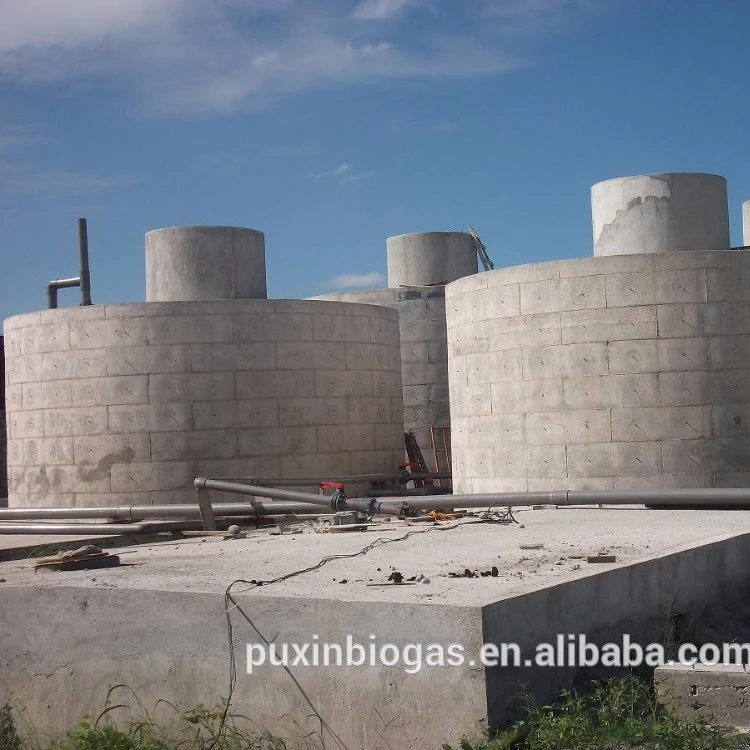- Digester before being discharged and is normally equal to the volume of the digester divided by the daily inputs of substrate25 26. It is important to optimize the retention time in order to ensure, proper digestion of the slurry and extraction of as much biogas as possible before discharge of the slurry.
- If reports are to be believed, perhaps 20 million digesters— almost all of them underground masonry digesters— have been built in China, and many millions have been built in India and other countries as well. Depending primarily on the size of the digester and local prices for bricks (etc.), such a unit may cost from US$350 to US$500 and up, which is a great deal of money for.
- How To Size A Digester System
- How To Size A Biogas Digester
- How To Size A Digester Tank
- Size Distortion
ADVERTISEMENTS:
To size a digester, take the daily manure production in your operation and multiply by 20. Research has shown that an above ground mixed reactor similar to tanks designed by Engineered Storage Products Company (ESPC), is going to be more efficient than a plug flow system. Scaling of the digester The size of the digester i.e. The digester volume is determined by the length of the retention time and by the amount of fermentation slurry supplied daily. The amount of fermentation slurry consists of the feed material (e.g., cattle dung) and the mixing water.
The following article will guide you about how to determine the size of a biogas plant.
Checklist for Determining the Size of Biogas Plant:
ADVERTISEMENTS:
ADVERTISEMENTS:
ADVERTISEMENTS:
How To Size A Digester System

ADVERTISEMENTS:


Selection of Parameters Affecting Biogas Plant Size :

How To Size A Biogas Digester
1. Introduction
A biogas plant is an anaerobic digester of organic material for the purposes of treating waste and concurrently generating biogas fuel. The treated waste is a nutrient-rich, nitrogen-rich fertilizer while the biogas is mostly methane gas with inert gases including carbon dioxide and nitrogen. Biogas plants are a preferred alternative to burning dried animal dung as a fuel and can be used for the treatment of human waste. Other feedstock which can be used includes plant material, non-meat or grease food-wastes, and most types of animal dung. Over a million biogas plants have been constructed in the developing world for treatment of organic wastes, alternative energy supply to direct burning in the home, and overall improvement of human health and the environment. Many factors for selection of feedstock and site location must be researched before deciding to install a biogas plant. Successful construction of the biogas plant requires a proper design and adherence to follow correct construction methods. The success or failure of any biogas plant primarily depends upon the quality of construction work. The following instructions are based on the step-by-step instructions from the Government of Nepal Biogas Support Program Gobar Gas and Agricultural Equipment Development Company of Nepal has developed the design for model 2047 biogas plant. This biogas plant model has become prolific across Asia and is known as a fixed-dome plant. The advantages of the fixed dome plant include the simplicity of design, few moving parts, low cost to construct and low maintenance. The disadvantages when compared to a floating-dome digester are primarily the inability to store gas for use on demand; gas from the fixed dome digester must be used as generated or expelled to avoid damaging the digester.
2. Determining Plant Size

How To Size A Digester Tank
This manual includes design and construction material quantities for the Gobar biogas plant models of 4, 6, 8, 10, 15 and 20 cubic meters capacity. Design and size of a plant other than mentioned above is feasible and a skilled engineer should be consulted for deviations from the provided designs. The biogas plant size is dependent on the average daily feed stock and
expected hydraulic retention time of the material in the biogas system. Generally, 24 kilograms of feedstock complimented with 24 liters of water per day with a hydraulic retention time of 35 days will require a 4-cubic meter plant. Table 2.1 below gives some relevant data about the six different sizes of biogas plants presented in this manual.
Size Distortion
The biogas plant detailed in this manual consists of five main structures or components: 1. InletTank; 2. Digester Vessel; 3. Dome; 4. Outlet Chamber; and 5. Compost Pits. The required quantity of feedstock and water is mixed in the inlet tank and the slurry is discharged to the digester vessel for digestion. The gas produced through methanogenesis in the digester is collected in the dome. The digested slurry flows to the outlet tank through the manhole. The slurry then flows through the overflow opening in the outlet tank to the compost pit. The gas is supplied from the dome to the point of application through a pipeline.When a biogas plant is underfed the gas production will be low; in this case, the pressure of the gas might not be sufficient to fully displace the slurry in the outlet chamber. It is important to design the plant keeping hydrostatic pressure higher at the inlet tank than the outlet tank. The hydrostatic pressure from slurry in the inlet and outlet tanks will pressurize the biogas accumulated in the dome. If too much material is fed into the digester and the volume of gas is consumed, the slurry may enter the gas pipe and to the appliances.
